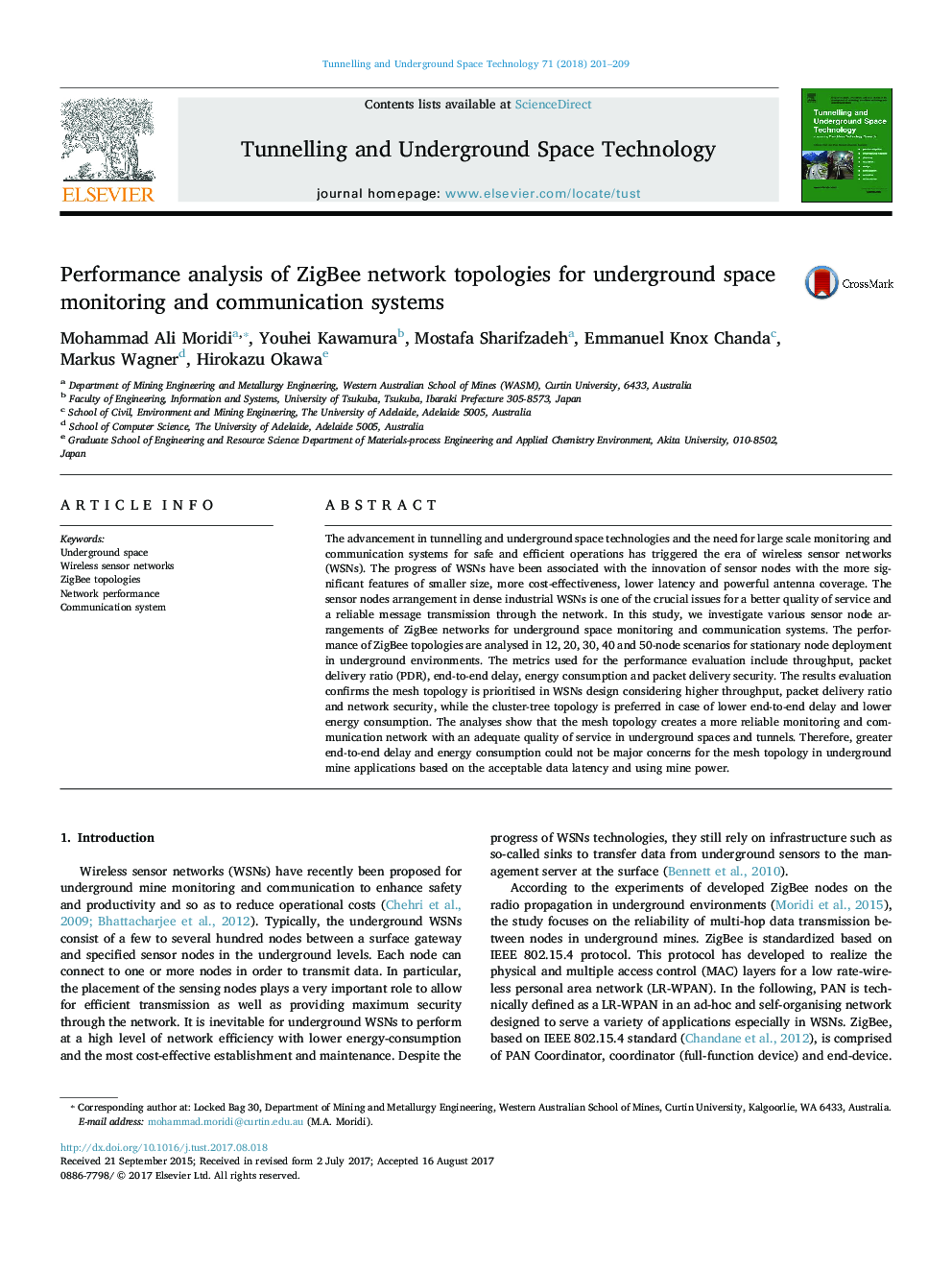| Article ID | Journal | Published Year | Pages | File Type |
|---|---|---|---|---|
| 4929189 | Tunnelling and Underground Space Technology | 2018 | 9 Pages |
â¢ZigBee was evaluated for underground space monitoring and communication systems.â¢Mesh and cluster-tree arrangements were investigated for a reliable transmission.â¢The network performance were analysed based on metrics.â¢Mesh topology shows a higher network performance for underground mines.
The advancement in tunnelling and underground space technologies and the need for large scale monitoring and communication systems for safe and efficient operations has triggered the era of wireless sensor networks (WSNs). The progress of WSNs have been associated with the innovation of sensor nodes with the more significant features of smaller size, more cost-effectiveness, lower latency and powerful antenna coverage. The sensor nodes arrangement in dense industrial WSNs is one of the crucial issues for a better quality of service and a reliable message transmission through the network. In this study, we investigate various sensor node arrangements of ZigBee networks for underground space monitoring and communication systems. The performance of ZigBee topologies are analysed in 12, 20, 30, 40 and 50-node scenarios for stationary node deployment in underground environments. The metrics used for the performance evaluation include throughput, packet delivery ratio (PDR), end-to-end delay, energy consumption and packet delivery security. The results evaluation confirms the mesh topology is prioritised in WSNs design considering higher throughput, packet delivery ratio and network security, while the cluster-tree topology is preferred in case of lower end-to-end delay and lower energy consumption. The analyses show that the mesh topology creates a more reliable monitoring and communication network with an adequate quality of service in underground spaces and tunnels. Therefore, greater end-to-end delay and energy consumption could not be major concerns for the mesh topology in underground mine applications based on the acceptable data latency and using mine power.
Graphical abstractDownload high-res image (102KB)Download full-size image
